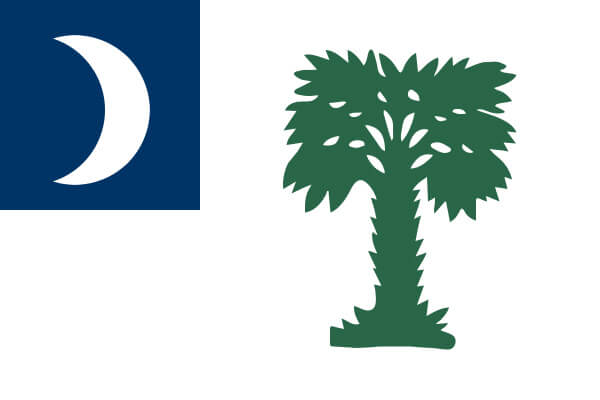Composition
The South Carolina flag features a white palmetto tree centered on a field of indigo with a white crescent in the upper left.

The South Carolina flag’s origins date back to the American Revolutionary War when Colonel William Moultrie designed their first militia flag, a silver crescent on a field of blue.
It has evolved since then (to include the palmetto tree), with one iteration having the shortest lifespan of any official U.S. state flag: just two days.
The current flag was adopted January 28, 1861.
The South Carolina flag features a white palmetto tree centered on a field of indigo with a white crescent in the upper left.

military troops’ silver crescent on the front of their caps
Note: The crescent is sometimes called a “gorget” although gorgets are typically worn around the throat.
a source of strong defense against British cannons during a fort attack on Sullivan’s Island
The Moultrie Flag’s blue was chosen to match the militia’s uniforms, however there are no official color guidelines.
Similar to the colors of the flag, South Carolina has no official guidelines for the size of the flag nor the treatment of the crescent and palmetto. Because of this, the flag sees a lot of variation.
Regardless, the flag is often produced with a proportion of 2:3.

Despite a variety of flags flying over South Carolina, only two have been officially recognized.

The flag supplied to militia units during the Revolutionary War, designed by William Moultrie.

A draft with the palmetto, the design later credited to Alexander S. Salley and Ellen Heyward Jervey.

The Two-Day Flag featured a gold palmetto within a white circle, changed moments later.

The current state flag of South Carolina.